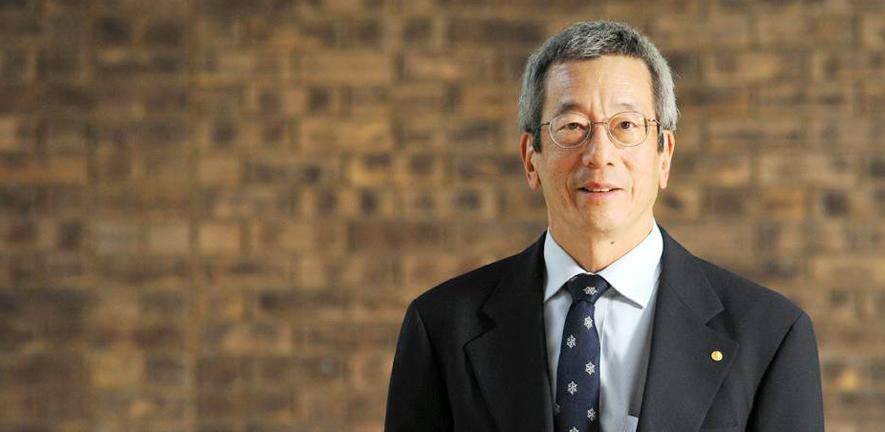
Nobel Prize in Chemistry 2008 for the discovery and development of the green fluorescent protein, GFP, shared with Osamu Shimomura and Martin Chalfie.
Department of Biochemistry Visiting Researcher (1981-1982).
Roger Yonchien Tsien was a New Yorker who studied at Harvard before completing a PhD in 1977 as a member of the Physiology Department in Cambridge where he remained as a Research Fellow until moving to the University of California, Berkeley and then to the University of California, San Diego. His PhD, supervised by Jeremy Sanders in the Department of Chemistry, was entitled The Design and Use of Organic Chemical Tools in Cellular Physiology, representing Tsien's early steps as a pioneer in the development of fluorescent dyes that are sensitive to the presence of particular ions, such as calcium. The prototype, Quin-2, was first demonstrated in experiments carried out in the Department of Biochemistry. Another of Tsien's calcium imaging dyes, Fura-2, has since been widely used to track the movement of calcium within cells, whilst Indo-1, a popular calcium indicator, emerged from Tsien's group in 1985. Tsien also developed fluorescent indicators for other bio-relevant ions.
Complementary to the quantification of cellular cation fluxes has been the realisation of methods to visualise proteins in cells and thus to be able to track their movement and measure their levels as cells respond to signals. The first step in this extraordinary achievement happened in 1962 when Osamu Shimomura, Frank Johnson, and Yo Saiga isolated a photoprotein (a protein that can emit light) from luminescent jellyfish that they called aequorin. They also found another protein that gave off a greenish fluorescence and helpfully called it green fluorescent protein (GFP). It transpired that when calcium binds to aequorin it glows blue, but some of this blue light is absorbed by its companion GFP and is re-emitted as green light. In due course, other creatures were also found to make GFPs, such as Obelia, the sea fur, and Renilla, a sea pansy.
After the GFP gene had been tracked down, Martin Chalfie engineered DNA that could be taken up by an animal of choice, which would then make the GFP protein. Chalfie had worked as a postdoc on worm development with Sydney Brenner and John Sulston at the MRC Laboratory of Molecular Biology in Cambridge. With this background, Chalfie's choice of model animal was obvious and, GFP-coding DNA with a regulatory sequence that would be switched on only in one type of worm cell having been constructed, the world saw the first use of GFP as a marker for gene expression in the form of a 'glow worm' with green fluorescent spots in the few neurons where GFP was made. In 1995 Roger Tsien made the first mutant of GFP with enhanced fluorescence. Tsien's molecular engineering of GFP led to the generation of a number of other mutants with different spectral properties, giving, for example, blue, cyan, red, or yellow fluorescence.
These achievements completely transformed the world of cell biology, and for making it all possible, Osamu Shimomura, Martin Chalfie and Roger Tsien shared the 2008 Nobel Prize in Chemistry.
